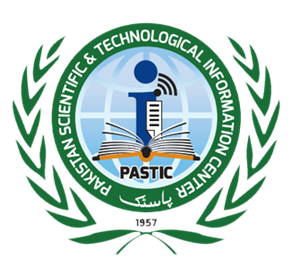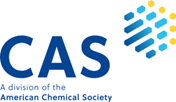Monkeypox: A Growing Global Health Challenge and the Need for Vigilant Preparedness
Facing the Rising Threat of Monkeypox
DOI:
https://doi.org/10.69750/dmls.01.04.045Keywords:
Monkeypox, zoonotic disease, infectious disease, public health challenge, Orthopoxvirus, global health, smallpox vaccine, disease transmission, epidemic preparednessAbstract
The Ongoing Public Health Challenge of Monkeypox
Monkeypox is relatively a new threat to the global community as it has brought into focus the issue of improved surveillance and response to infectious diseases[1]. Initially, a rather exotic zoonotic pathogen limited to certain regions of Central and West Africa, monkeypox is being detected in the countries that previously did not report its occurrence, which creates new challenges for the health care systems of the world[2].
Understanding the Disease
Monkeypox is an infectious disease that results from the attack of monkeypox virus which is in the Ortho poxvirus group of the virus family Poxviridae though the smallpox virus has been eradicated. The disease has some symptoms are similar to smallpox and includes fever, body aches, and rash that goes through different stages. Despite the fact that monkeypox is less severe when compared with smallpox, significant morbidity and potentially mortality cannot be ruled out[3]. Direct human-to-human transmission is by contact with infected body fluids, aerosols, or fomites such as used clothing, beddings among others. Recent epidemics have been experienced in the urban areas as this makes it easier for the virus to spread due to high population densities. This has transformed the disease from one which affected isolated African communities to a problem in developed, globally connected cities[4].
Why Should We Be Concerned?
The stoppage of smallpox vaccination has exposed the people to Ortho poxviruses such as monkeypox. The constant risk of getting zoonotic diseases due to factors such as deforestation, urbanization and close interaction with animals means that diseases, which are mainly associated with animals, can easily infect human beings. Furthermore, the flexibility in the global interconnectivity of today’s world through travel and business has facilitated the spread of the virus across the borders. In 2022, 34 monkeypox cases were reported in European countries, the Americas, and other areas of the world, where the disease had not been identified[5, 6].
The Public Health Response
To this recent outbreak of the disease, the WHO and the CDC have scaled up awareness campaigns and encouraged surveillance as well as put in place measures to contain the spread of the disease. Mass vaccination campaigns using smallpox vaccines that work against monkeypox have been intensified in the affected countries, however, there are several problems with implementing this approach: the difficulties of delivering vaccines in time and the scarcity of the vaccines themselves[7]. These are important in educating communities on how to avoid the disease and this include avoiding contact with sick persons, washing hands regularly and consulting a doctor when experiencing early symptoms of the disease. It also means that health systems need to be ready and able to identify such patients and isolate them to avoid spreading of the virus[8, 9].
Looking Forward
The spread of monkeypox in the non-endemic countries is a cause of concern and questions the efficiency of our societies’ prevention, detection, and controlling of infectious diseases. Even as the current outbreaks have informed the world of the virus, it is important to note that this is not a one-off case[10]. Zoonotic diseases, which can be transmitted from animals to people, will remain a threat into the future as people increase in numbers and expand their living space into the domain of wildlife. The fight against monkeypox is the fight against all other infectious diseases that can be most effectively fought for with a proper approach and mutual cooperation of all countries[11]. Monkeypox is not as dangerous as some other infectious diseases but looking at the example of how this disease affected people one can conclude that public health cannot be unguarded. Prevention of such diseases in the future would require increased investment in the global health care system, outcome of research on new diseases and vaccination exercises. We cannot afford to wait for another pandemic to happen in order to start acting[12, 13].
Downloads
References
Nuzzo JB, Borio LL, Gostin LO. The WHO declaration of monkeypox as a global public health emergency. JAMA. 2022;328(7):615-7. doi:10.1001/jama.2022.12513
Zardi EM, Chello C. Human monkeypox: a global public health emergency. Int J Environ Res Public Health. 2022;19(24):16781. doi:10.3390/ijerph192416781
Ogunleye SC, Akinsulie OC, Aborode AT, Olorunshola MM, Gbore D, Oladoye M, et al. The re-emergence and transmission of monkeypox virus in Nigeria: the role of one health. Front Public Health. 2024;11. doi:10.3389/fpubh.2023.1334238
Banjar WM, Alaqeel MK. Monkeypox stigma and risk communication: understanding the dilemma. J Infect Public Health. 2024;17:4-7. doi:10.1016/j.jiph.2023.03.002
Haque MA, Halder AS, Hossain MJ, Islam MR. Prediction of potential public health risk of the recent multicountry monkeypox outbreak: an update after the end declaration of global public health emergency. Health Sci Rep. 2024;7(6):e2136. doi:10.1002/hsr2.2136
Jairoun AA, Al-Hemyari SS, Abdulla NM, El-Dahiyat F, Shahwan M, Hassan N, et al. Awareness and preparedness of human monkeypox outbreak among university students: time to worry or one to ignore? J Infect Public Health. 2022;15(10):1065-71. doi:10.1016/j.jiph.2022.08.015
Spirito F, Guida A, Caponio VCA, Lo Muzio L. Monkeypox: a new challenge for global health system? Life. 2023;13(6):1250. doi:10.3390/life13061250
Wenham C, Eccleston-Turner M. Monkeypox as a PHEIC: implications for global health governance. Lancet. 2022;400(10369):2169-71. doi:10.1016/S0140-6736(22)01437-4
Fahmy M, Shabata L, Aktham Y. From a neglected pathogen to a public health emergency: connecting the dots in monkeypox emergence. Cureus. 2022;14(9):e28667. doi:10.7759/cureus.28667
Liang C, Qian J, Liu L. Biological characteristics, biosafety prevention and control strategies for the 2022 multi-country outbreak of monkeypox. Biosaf Health. 2022;4(6):376-85. doi:10.1016/j.bsheal.2022.11.001
McCarthy MW. Recent advances in the diagnosis of monkeypox: implications for public health. Expert Rev Mol Diagn. 2022;22(7):739-44. doi:10.1080/14737159.2022.2116979
Oduoye MO, Faloye TO, Ubechu SC, Nafula WP, Abu Taleb YK, Gharaibeh RS, et al. Factors responsible for the re-emergence of monkeypox and implications for global health. IJS Glob Health. 2024;7(4). doi:10.1097/GH9.0000000000000459
Mishra B, Rath S, Mohanty M, Mohapatra PR. The threat of impending pandemics: a proactive approach. Cureus. 2023;15(3):e36723. doi:10.7759/cureus.36723






















